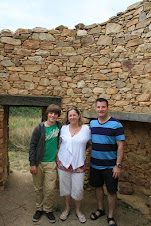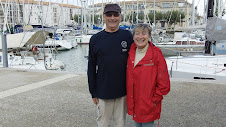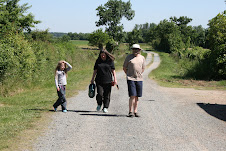Today I lunched with Montagu
part of the series:
Quel monde formidable or loosely translated ~
What a wonderful world!
It was one of those all too rare occasions this
year, when we were able to lunch with the door open, as for lunching outside on
the terrace; such an occurrence has been even rarer this year. But, although the world’s weather is indeed
part of the “wonderful” world, even though day after day of dreary wet weather
stretches that point a little, and somewhat surprisingly the weather forms almost
as much of the daily conversations in our part of France as it does in England,
this blog post isn’t going to be a rant about the wonderfully awful spring we
have had!!
No, but I would like to be able to do a little
name dropping and say that lunch was with another nobleman of my acquaintance,
a Lord Montagu, Harry to me but sir to the rest of you! But sadly the Montagu in question despite
having the most astonishingly regal air and being indeed a prince amongst
others, no you don’t have to say “your Majesty,” is indeed no other that one of
the most majestic fliers I have ever had the pleasure and privilege to watch,
and all without the harsh drone of a propeller or ear-splitting whistle of a
jet engine. The Montagu in question is
no other than a Montagu’s harrier, closely related to the hen harrier, but
reputedly the “lightest and most elegant” of the harriers, “with the longest,
most swept back wing tips: ideal for riding the warm breezes in Mediterranean
summers.” And, not getting back onto the
weather although we reputedly have as many days sunshine each year as the Med
they just haven’t arrived this year, they are “scarcer than hen harrier in most
places except southern Europe, where they are characteristic of rolling steppes
and cereal-growing areas.”
But in these here parts they seem to be
relatively common, throughout the summer, and are truly a wonder to behold as
they quarter the fields, particularly when recently cut, searching for
prey. Their flight is as I said before
majestic; their wings flapping deeply, with wavering glides when their wings
form a V shape, (or dihedral to give it its technical name!!) and with the most astonishing and seemingly
impossible twists, turns and dashes to take the small mammals and birds, on
which they feed, totally by surprise.
The term poetry in motion must surely have been coined to describe these
aerial acrobats, and it is usually the males that catch the eye, as they have
much lighter plumage, a pale grey, appearing almost white at times, with
distinctive black bands and indeed the first ones I saw, I thought at quick
glance, were particularly agile seagulls, surprisingly uncommon around here
despite our proximity to the sea. Here
the seagulls don’t seem to have become urban dwellers in the same way as they
have in the UK. The female Montagu
harriers are darker, brown on top and a pale yellow-brown underside. Generally, they can be confused with others,
most noticeably the hen harrier or pallid harrier, but apart from subtleties in
markings it’s the “elegance and elasticity” that does it for me, both in terms
of identification and sheer delight! And, what a delight to be able to sit in my
kitchen having lunch and being entertained so elegantly!
Why Montagu?
Its common name commemorates the British naturalist George Montagu, but
its Latin name, Circus pygargus, is certainly very apt as they are just like
the most graceful of circus performers and some!! And, in French; busard cendré, basically ash
harrier, I suppose in reference to the male colouring, well they do say
Monsieurs et Madames in France!!
































































